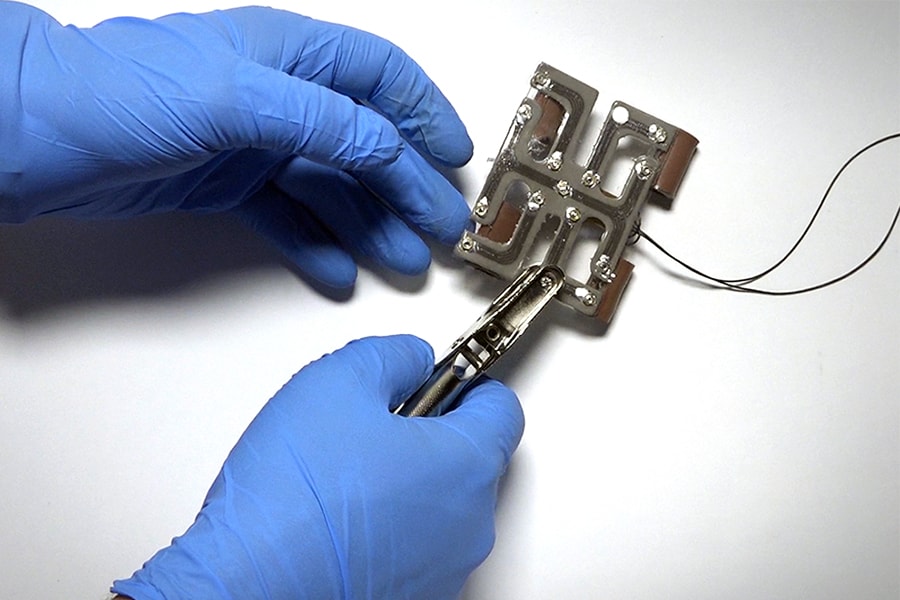
Circuit, Heal Thyself
Self-healing material keeps machines safe from mechanical failures
By Lisa Kulick
Media Inquiries- College of Engineering
Many natural organisms have the ability to repair themselves. Now, manufactured machines will be able to do so, too.
In findings published this week in Nature Materials, researchers at Carnegie Mellon University have created a self-healing material that spontaneously repairs itself from extreme mechanical damage. Think of a first responder robot that can rescue humans during an emergency without sustaining damage, an inflatable structure that can withstand environmental extremes on Mars, or even a health-monitoring device on an athlete during rigorous training.
This soft-matter composite material is composed of liquid metal droplets suspended in a soft elastomer. When damaged, the droplets rupture to form new connections with neighboring droplets and reroute electrical signals without interruption. Circuits produced with conductive traces of this material remain fully and continuously operational when severed, punctured, or had material removed.
"Other research in soft electronics has resulted in materials that are elastic and deformable, but still vulnerable to mechanical damage that causes immediate electrical failure," said Carmel Majidi, an associate professor of mechanical engineering who holds a courtesy title in the Robotics Institute. "The unprecedented level of functionality of our self-healing material can enable soft-matter electronics and machines to exhibit the extraordinary resilience of soft biological tissue and organisms."
Applications for its use include bio-inspired robotics, human-machine interaction, and wearable computing. Because the material exhibits high electrical conductivity that does not change when stretched, it is ideal for use in power and data transmission.
Carmel Majidi describes his lab's creation of a soft, stretchable, electrically conductive material that can repair itself when damaged.
Majidi, who directs the Integrated Soft Materials Laboratory, is a pioneer in developing new classes of materials in the fields of soft matter engineering and soft robotics.
"If we want to build machines that are more compatible with the human body and the natural environment, we have to start with new types of materials," he said.
The findings were reported in "An Autonomously Electrically Self-Healing, Liquid Metal-Elastomer Composite for Robust Soft-Matter Robotics and Electronics," Nature Materials, DOI: 10.1038/s41563-018-0084-7.
Other authors include Eric Markvicka, a doctoral student in the Robotics Institute, and Xiaonan Huang, a doctoral student in mechanical engineering, and Michael D. Bartlett of Iowa State University.